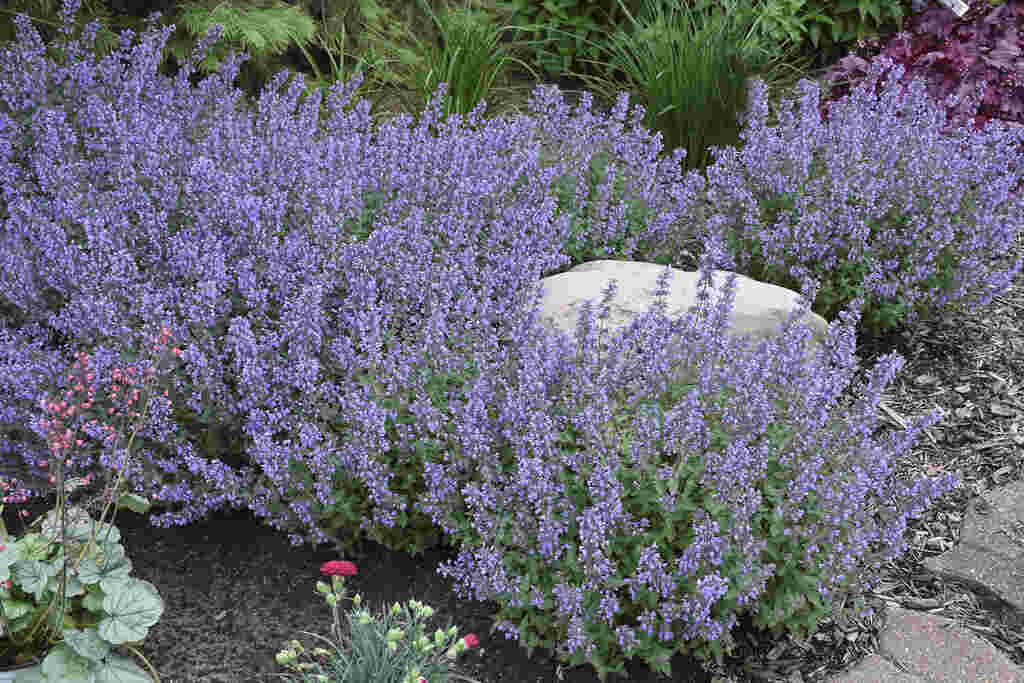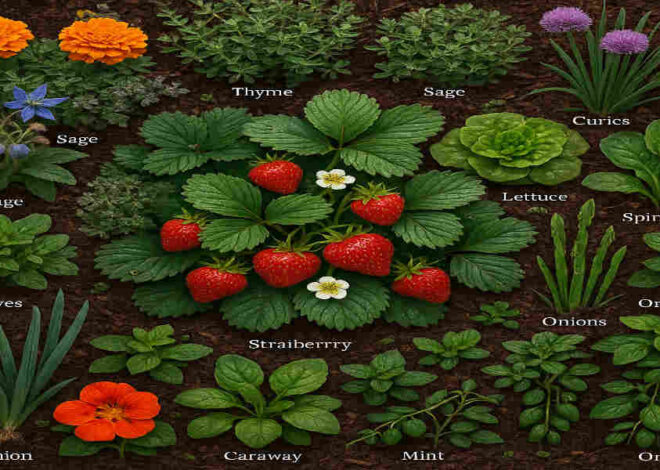
How to Grow Catmint: Simple Care Tips for Home Gardens
The catmint plant, known for its resilient nature and aesthetic appeal, is a treasure in any garden. This perennial herb from the Nepeta genus thrives with minimal care, blooming for months and bringing a splash of colour with its silvery-green foliage and vibrant flowers. Ideal for both seasoned and beginners, the catmint plant offers long-lasting beauty and versatility in garden placement and design.
What is the Catmint Plant?

Botanical Background
The catmint plant, a proud member of the mint family, is recognized scientifically under the genus Nepeta. This group comprises various species known for their aromatic leaves and robust growing habits.
Physical Description
Typically, catmint exhibits silvery-green foliage, forming a lush backdrop to its lavender, blue, or white flowers. The leaves release a pleasant scent when brushed against, adding to the sensory pleasure of the garden.
Catmint vs. Catnip
While often confused with catnip, catmint generally focuses more on ornamental use with longer-lasting blooms, whereas catnip is more noted for its effects on cats.
Historical Uses
Historically, catmint has been cultivated for its beauty, utility in herbal remedies, and effectiveness in attracting beneficial wildlife to gardens.
Benefits of Growing Catmint Plant
Growing catmint comes with a plethora of benefits. It’s drought-tolerant, making it a low-maintenance choice for various landscapes. The plant’s flowers are magnets for pollinators like bees, butterflies, and hummingbirds, which play a crucial role in the health of any garden. Moreover, catmint is resistant to deer and rabbits, ensuring it remains undisturbed by wildlife. Its aromatic nature adds an ornamental value, making it suitable for ground covers, edging, rock gardens, and containers.
Popular Catmint Plant Varieties
Several varieties of catmint are to be considered, such as Nepeta faassenii, Nepeta racemosa, and Nepeta sibirica. Each type varies in size and flower colour, offering options for different garden designs and uses. Choosing the right variety depends on your garden’s specific conditions and aesthetic goals.
Where and When to Plant Catmint
Timing and Placement The best time to plant catmint is in the early spring, following the last frost. Catmint thrives in full sun to partial shade and is adaptable to various environments, as reflected in its USDA hardiness zones recommendation of 3–9.
Companion Planting Catmint pairs well with other drought-tolerant perennials such as roses and lavender, making it a versatile choice for creative garden designs.
How to Plant Catmint Plant (Step-by-Step)
Soil Preparation
Begin with well-draining, loose, or rocky soil to prevent waterlogging, which is detrimental to catmint.
Planting Techniques
You can start catmint from seeds, cuttings, or nursery plants. Proper spacing is crucial to allow for air circulation and full growth potential.
Initial Care
After planting, ensure adequate watering and consider mulching to retain soil moisture and control weeds.
Catmint Plant Care Essentials
Light Requirements
Catmint prefers full sun but can tolerate partial shade, especially in hotter climates. Adequate light is essential for optimal blooming.
Soil Needs
The plant favours free-draining, sandy, or rocky soil. Heavy, clay-rich soils should be avoided to prevent root rot.
Watering
Establish a regular watering schedule, considering that established plants are drought-tolerant. Avoid overwatering to prevent disease.
Fertilizing
Catmint requires minimal fertilization. Occasional composting can encourage healthier growth without the risk of over-fertilizing.
Temperature & Climate
It is adaptable to a wide range of temperatures but may require protection from extreme conditions.
Pruning and Deadheading Catmint for Extended Blooms
Regular pruning and deadheading can significantly extend the blooming period and enhance the plant’s appearance. After the first bloom, cutting back the plant can encourage a second bloom cycle.
Overwintering Catmint Plant
Preparing catmint for winter involves mulching and potentially cutting back the foliage to protect it from freezing temperatures.
Common Pests and Problems
Despite its resistance, catmint can occasionally suffer from problems like root rot or powdery mildew, usually due to poor soil conditions or inadequate airflow.
Propagating Catmint Plant
Propagation can be effectively achieved through division, cuttings, or seeds, depending on the gardener’s preference and the time of year.
Companion Planting and Design Ideas
Catmint’s versatility makes it an excellent companion for many plants, enhancing garden spaces’ overall biodiversity and aesthetic.
Troubleshooting: Catmint Plant Problems & Solutions
Issues like leggy growth, poor blooming, and yellowing leaves can often be resolved with adjustments in sunlight exposure, soil type, or watering practices.
Catmint Plant vs. Catnip: Key Differences
| Feature | Catmint Plant (Nepeta) | Catnip (Nepeta cataria) |
|---|---|---|
| Ornamental Use | High | Low |
| Effect on Cats | Mild/None | Strong |
| Bloom Duration | Long | Shorter |
| Foliage Scent | Aromatic | Less fragrant |
Conclusion: Why the Catmint Plant Belongs in Every Garden
In conclusion, the catmint plant is a stellar addition to any garden due to its beauty, resilience, and ease of care. Its long blooming period and low maintenance needs make it an ideal choice for gardeners looking to enhance their landscape with minimal effort.
You may also read (how to harvest asparagus like a pro expert tips for perfect spears)


